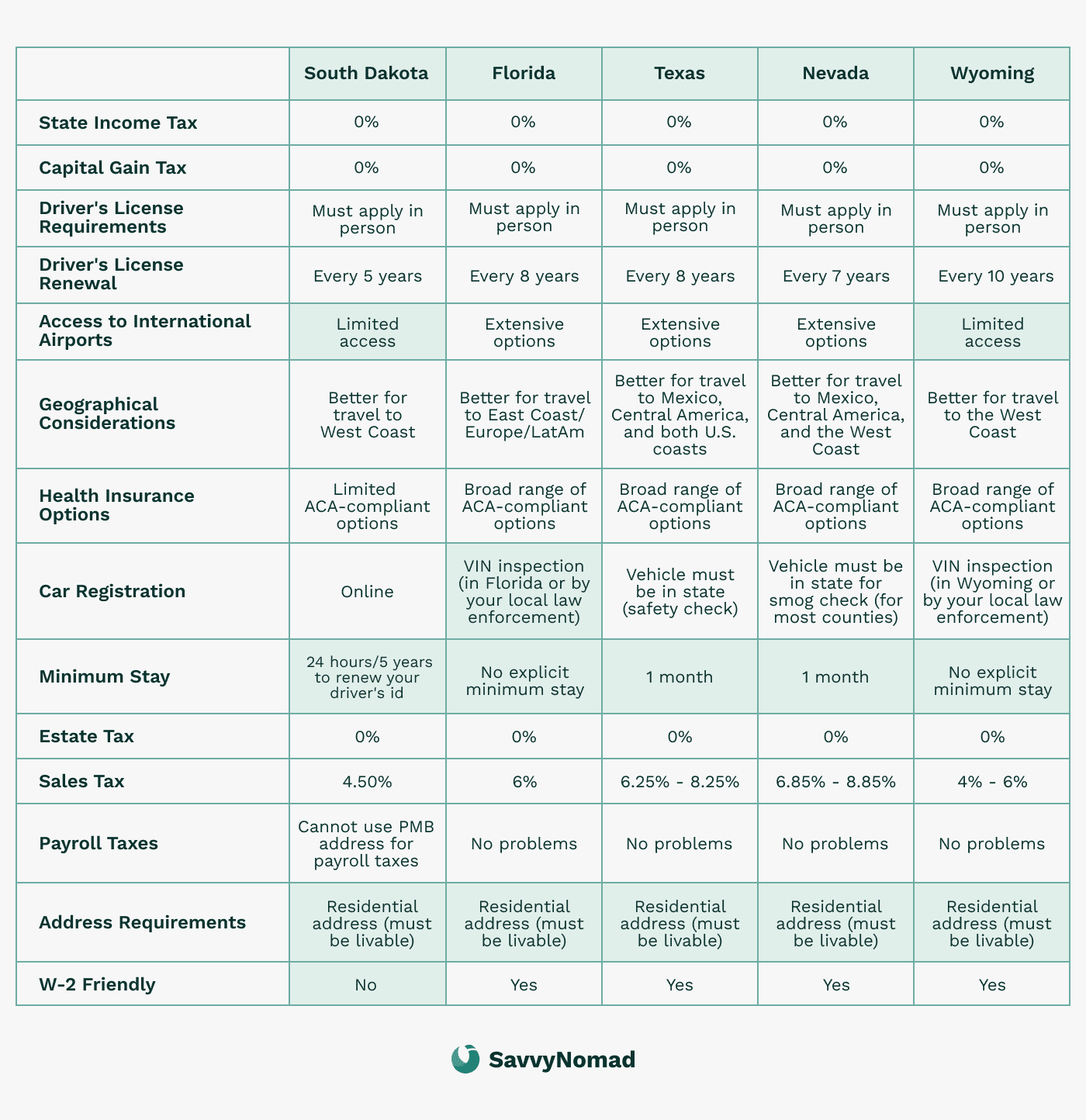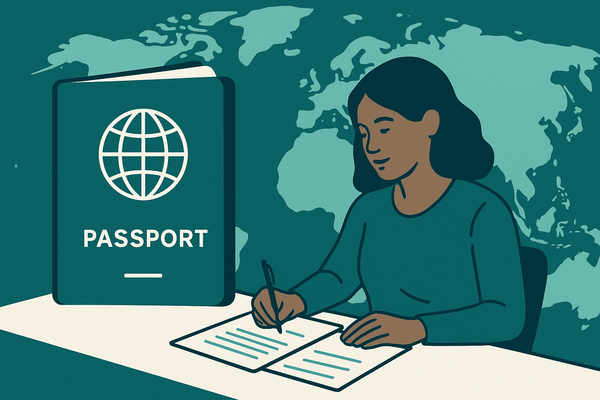How to leave Idaho residency?

Moving out of Idaho can be an exciting change, whether it's for a new job, lower taxes, or just a change of scenery. Idaho has specific rules about residency that can impact your tax responsibilities, eligibility for state benefits, and more.
Step 1: Establish a new domicile
Once you’ve decided to leave Idaho, the next step is to set up your new permanent home—your domicile—in another state. Simply moving isn’t enough; you must take concrete steps to make your new state your official residence.
Here’s how to do that:
1) Establish new residency
- Secure a residential address: Find a place to live in your new state, whether it’s through renting or buying a home. Many states, like Florida, offer tax benefits such as the homestead exemption, which could help lower your property taxes. Setting up a permanent residence in your new state is essential to proving that you’ve left Idaho.
Acceptance always depends on each institution’s own policies, and the service itself does not provide tax, legal, or investment advice.
- File a Declaration of Domicile: Some states, like Florida, allow you to file a Declaration of Domicile, a legal document that confirms your intent to make the new state your permanent home.
Residency guides:

2) Relocate your belongings
Moving your personal belongings—like furniture, vehicles, and household items—helps show that your move is permanent, and that you intend to live in the new state long-term.
3) Spend time in your new state
Spending a significant amount of time in your new state indicates a genuine relocation. Spending more time there than in Idaho can help avoid confusion about where your primary residence is, especially if your situation is ever reviewed.
4) Transfer IDs and vehicle registrations
Update your driver’s license and vehicle registration to reflect your new address in your new state. This is a strong indicator of your intent to live there permanently.
5) Register to vote (if eligible)
If you are eligible to vote in your new state, you may update your voter registration there and follow the official process to cancel your Idaho registration. Registration and voting in your new state can be a supporting indicator of domicile, but it is not determinative on its own.
For questions about where you are legally allowed to register and vote, rely on guidance from state and local election officials, and never vote in more than one state for the same election.
6) Update financial accounts
Notify your bank, credit card companies, and other financial institutions of your new address. Keeping all your financial documents up to date with your new residency helps confirm your move.
7) Notify your employer
Let your employer know about your new address so they can update your payroll and tax withholdings to your new state. This can help reduce the chance that Idaho state income tax continues to be withheld after your move.

Step 2: Sever ties with Idaho
After establishing your new home, it’s important to sever significant ties with Idaho to reduce the chances that you will be treated as a resident for tax purposes and to strengthen your position if your status is ever reviewed.
Here are the steps you should take to sever these ties:
1) Close Idaho financial ties
- Close local bank accounts: If you have any bank accounts, investment accounts, or financial assets linked to Idaho, consider closing them or transferring your funds to banks in your new state. This action shows that your financial life is now centered in your new state.
- Update personal records: Notify the IRS, Social Security, insurance companies, and other relevant agencies of your new address to ensure all personal records reflect your new residence.
2) Sell or lease property
If you own a home or any other property in Idaho, selling it is one of the strongest ways to show that you no longer consider Idaho your primary residence. If you’re not ready to sell, consider leasing the property out for an extended period, which can also help demonstrate your intent to leave.
3) Cancel local subscriptions/services
Cancel any subscriptions or memberships tied to Idaho, such as gym memberships, utilities, or local services. Keeping these active could suggest that you still have ties to the state.
4) Transfer healthcare and insurance
Transferring your healthcare providers and insurance to your new state shows that your essential services are now tied to your new domicile.

Step 3: Time spent outside Idaho
To manage your Idaho tax exposure, it’s important to understand how the state looks at both your domicile (your permanent home) and the time you spend in Idaho. Idaho treats you as a resident if you’re domiciled in the state or if you keep a home in Idaho for the entire tax year and spend more than 270 days there, so presence and housing both matter.
270-day home-plus-days test
- How the 270-day test works: Under Idaho law and guidance, you can be treated as a resident if you keep a home in Idaho for the entire tax year and spend more than 270 days in the state during that year, even if you say your main home is somewhere else.
- Why days alone aren’t enough: Being in Idaho for fewer than 270 days doesn’t automatically make you a nonresident if Idaho is still your domicile. If your permanent home, family, or main economic interests remain in Idaho, the state can still treat you as a resident even under that threshold.
- Practical approach: As a practical rule of thumb, many people who are trying to leave Idaho residency aim to spend significantly less time in Idaho and clearly show that their primary home and life are now centered in another state.
Absence from Idaho
An individual may be treated as a nonresident if they are absent from Idaho for at least 445 days within a 15-month period and meet additional conditions about having no Idaho home available for themselves or their family and limited time back in Idaho.
In practice, your home generally must not be available for your or your family’s use in Idaho during this period, and your time back in Idaho is tightly limited, so it’s important to review the official Idaho rules or work with a tax professional before relying on this exception.
Keep detailed travel records
- Why it’s important: If your residency status is ever questioned, having detailed records of your time spent in and out of Idaho will help show how much time you actually spent in the state and support your claim that your main home is elsewhere.
- What to track: Save flight tickets, hotel receipts, and other travel documents showing when you entered and left Idaho. Having a detailed log of your movements will be helpful if Idaho’s Department of Revenue ever audits your residency status.
Step 4: Idaho-sourced income
Even after officially leaving Idaho residency, you may still have some income tied to the state, such as rental or business revenue. It’s important to know how to handle Idaho-sourced income to comply with state tax laws.
Here’s how to handle Idaho-sourced income once you’ve moved:
1) Ongoing tax responsibilities
- File non-resident tax returns: If you continue to earn income from sources within Idaho, such as rental properties or businesses, you’ll typically file nonresident Idaho tax returns. Filing as a nonresident generally means Idaho taxes only your Idaho-sourced income, while income from your new home state is taxed under that state’s rules. Because sourcing can be complex, especially for remote work or business income, it’s wise to get professional advice.
- Tax on Idaho-sourced income: Even though you are no longer a resident, Idaho still has the right to tax income generated within the state. This could include wages earned in Idaho, rental income, or profits from Idaho-based businesses.
2) Rental or business income
If you own rental property or a business in Idaho, any income generated from those sources will still be subject to Idaho state taxes. It’s important to consult with a tax professional to ensure compliance with Idaho tax laws, especially if you have complex income streams that tie back to the state.





